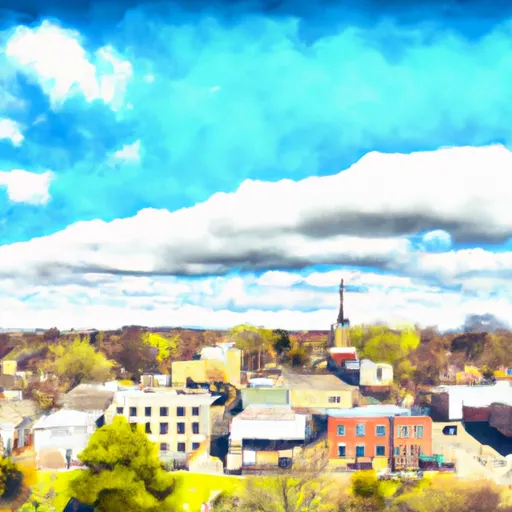-
 Snoflo Premium
Snoflo Premium
Get unlimited access to all our content
With no Ad interruptions! - Start Your Free Trial Login with existing account
Rutland
Eden Index
Climate
8.4
•
Recreation
3.2
•
Community
5.3
•
Safeguard
5.8/10

Rutland, Massachusetts is a picturesque town located in Worcester County. It experiences a humid continental climate, characterized by hot summers and cold winters. Summers are pleasant with average temperatures ranging from 70 to 80°F, while winters can be quite cold, with temperatures dropping to 20°F or below.
Hydrologically, Rutland is surrounded by several lakes and ponds, making it a haven for water enthusiasts. Long Pond, Whitehall Pond, and Turkey Hill Pond are popular destinations for fishing, boating, and swimming. The town also boasts several scenic streams and wetlands, contributing to its overall natural beauty.
Outdoor recreation opportunities in Rutland are abundant. The town is home to the Rutland State Park, which offers activities such as hiking, bird watching, picnicking, and camping. The park covers over 3,000 acres and includes trails that are suitable for all skill levels. Additionally, Rutland is renowned for its extensive network of trails, perfect for biking, horseback riding, and walking.
In summary, Rutland, Massachusetts offers a diverse climate with warm summers and cold winters. Its hydrology constituents include lakes, ponds, streams, and wetlands, providing ample opportunities for water-based activities. Outdoor enthusiasts can enjoy the town's state park, extensive trail system, and various recreational amenities.
What is the Eden Index?
The Snoflo Eden Index serves as a comprehensive rating system for regions, evaluating their desirability through a holistic assessment of climate health, outdoor recreation opportunities, and natural disaster risk, acknowledging the profound impact of these factors on livability and well-being.
Climate Health Indicator (CHI): 8.4
Rutland receives approximately
1228mm of rain per year,
with humidity levels near 72%
and air temperatures averaging around
8°C.
Rutland has a plant hardyness factor of
6, meaning
plants and agriculture in this region thrive during a short period during spring and early summer. Most
plants will die off during the colder winter months.
By considering the ideal temperature range, reliable water supplies, clean air, and stable seasonal rain or snowpacks, the Climate Health Indicator (CHI) underscores the significance of a healthy climate as the foundation for quality living.
A healthy climate is paramount for ensuring a high quality of life and livability in a region, fostering both physical well-being and environmental harmony. This can be characterized by ideal temperatures, reliable access to water supplies, clean air, and consistent seasonal rain or snowpacks.
Weather Forecast
Streamflow Conditions
Lower Connecticut
Area Rivers
Lower Connecticut
Snowpack Depths
Lower Connecticut
Reservoir Storage Capacity
Lower Connecticut
Groundwater Levels
Recreational Opportunity Index (ROI): 3.2
The Recreational Opportunity Index (ROI) recognizes the value of outdoor recreational options, such as parks, hiking trails, camping sites, and fishing spots, while acknowledging that climate plays a pivotal role in ensuring the comfort and consistency of these experiences.
Access to outdoor recreational opportunities, encompassing activities such as parks, hiking, camping, and fishing, is crucial for overall well-being, and the climate plays a pivotal role in enabling and enhancing these experiences, ensuring that individuals can engage in nature-based activities comfortably and consistently.
Camping Areas
| Campground | Campsites | Reservations | Toilets | Showers | Elevation |
|---|---|---|---|---|---|
| Otter River State Forest | 85 | 864 ft | |||
| Lake Dennison State Park | 150 | 829 ft |
Nearby Fishing
Nearby Ski Areas
Catastrophe Safeguard Index (CSI):
The Catastrophe Safeguard Index (CSI) recognizes that natural disaster risk, encompassing floods, fires, hurricanes, and tornadoes, can drastically affect safety and the overall appeal of an area.
The level of natural disaster risk in a region significantly affects safety and the overall livability, with climate change amplifying these risks by potentially increasing the frequency and intensity of events like floods, fires, hurricanes, and tornadoes, thereby posing substantial challenges to community resilience and well-being.
Community Resilience Indicator (CRI): 5.3
The Community Resilience Indicator (CRI) recognizes that education, healthcare, and socioeconomics are crucial to the well-being of a region. The CRI acknowledges the profound impact of these elements on residents' overall quality of life. By evaluating educational resources, healthcare accessibility, and economic inclusivity, the index captures the essential aspects that contribute to a thriving community, fostering resident satisfaction, equity, and social cohesion.

